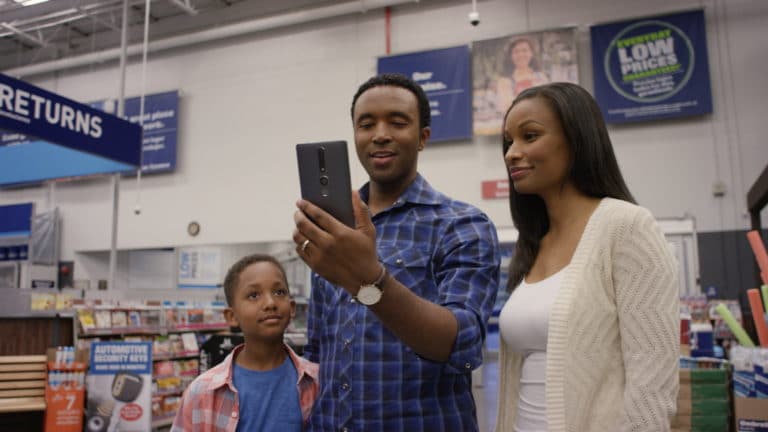
XR Talks is a weekly series that features the best presentations and educational videos from the XR universe. It includes embedded video, as well as narrative analysis and top takeaways. Speakers’ opinions are their own.
How is AR developing as a retail shopping tool? And how are retailers executing apps and campaigns? The answer is slowly… but they’re on the right path according to a panel at AWE. Along with a presentation from Walmart, this week’s XR Talks a double feature (videos below).
First, what are the ways that AR is fusing with retail? Success stories so far involve aiding shoppers in store aisles. That includes things like Walmart’s new app feature that lets shoppers contextualize purchases through informational overlays on products they point their phones at.
Where does this work best, and what use cases are materializing? According to Transformation Group’s Irena Cronin during the retail-focused AWE panel, it’s useful where there are large items or sku-intensive categories with lots of variability and product attributes (size, color, texture, etc.).

Beyond where AR works in retail and brand marketing, what about where it doesn’t work? Media Monks’ Kelly Kandle warns against half-hearted, under-budgeted AR activations; or those that are done just for the sake of doing AR. This ends up being ineffective at best and damaging at worst.
“For me, as I work with brands and agencies, the projects that don’t work well is when there’s not a real reason for it,” she said. “Or there’s not a budget and you’re just doing it for the sake of checking that box that ‘we did an AR project.’ I think those are the ones that kind of fall flat.”
As we’ve examined, the execution not only needs to be native, but also the metrics. Just like in the smartphone era, the ad world tends to apply comfortable/legacy metrics to emerging media (think: clicks and impressions). These measurements will fail to capture AR’s true value.
“With immersive technology, everyone’s going to ask for the ROI,” said You Are Here Labs’ futurist and XR marketing guru, Kathy Hackl. “Do we need to create new metrics… something like return on engagement or whatever that would translate to? There’s definitely going to be new metrics.”
See the full Panel video below
Walking the Walk
As for an example of a real-life retailer that is embracing AR, Walmart is on the top of that list. This can be seen from its aforementioned app feature announced earlier this month that lets in-aisle shoppers get informational overlays for items they point their phone at.
Walmart architect engineer Steven Lewis believes that though most shopping happens offline, e-commerce excels at being able to dynamically search and filter product attributes. So AR’s utility can come into play in combining the best of both worlds, he posed at AWE.
As a proof of concept, his team built an AR prototype earlier this year. The app, when pointed at a shelf of cosmetic products, allows users to filter attributes (price, colors, ratings), similar to an e-commerce experience. It then highlights items that match the filter criteria.
“When I say ‘physical to digital’ I mean it literally: smash them together, “said Lewis at AWE. “We partnered with L’Oreal in the very SKU-intensive area of skin care. You choose filter criteria and it narrows down and filters out what you don’t want to see.”

Similar to Kathy Hackl’s comments above regarding new metrics, there are also benefits beyond the shopper’s user experience. For example, the AR in-aisle engagement can provide analytics to retailers that inform everything from inventory management to optimal layouts.
“There’s lots of analytics you can get as a retailer or brand when you actually have someone with a mobile device, or headset in the future, looking at your products,” said Lewis. “Retailers today try to guess your dwell time… there could be a whole lot of [AR] analytics that would be helpful.”
Lastly, it goes back to utility. A key guiding principle for AR that’s truly useful and drives recurring engagement is to design experiences for everyday people. This also invokes a fundamental success factor in XR and tech in general: solve human problems, not engineering ones.
“You don’t want to build something and spend millions of dollars and it’s a one-time experience,” said Lewis “That one-time experience may be amazing… but we try to make sure that we build it so it works for everyone — not just the one-time use but for continuous use.”
See Lewis’ full session video below
For deeper XR data and intelligence, join ARtillry PRO and subscribe to the free AR Insider Weekly newsletter.
Disclosure: AR Insider has no financial stake in the companies mentioned in this post, nor received payment for its production. Disclosure and ethics policy can be seen here.
Header image credit: Lowes
